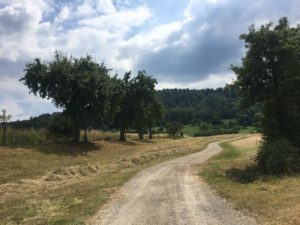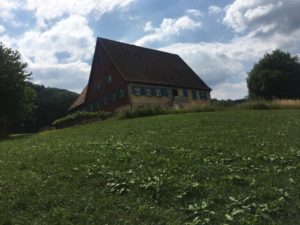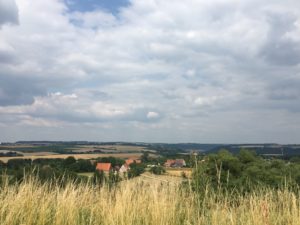Who knew you could meet up with your grade school best friend after 10 years apart on another continent?! Although Augusta and I were only in school together for the fourth grade, we were inseparable. Unfortunately, we lost touch after fourth grade as both of our families moved from South Bend to Minnesota and Tennessee. But earlier this summer, I saw on Facebook that she was going to be in France for the summer doing a similar language immersion program for Pennsylvania State University. So, I messaged her to see if she would like to get together and I am so glad she said yes!
She came to visit me in Schwäbisch Hall for three days and we had a blast! I signed us up for a walking tour of town. The tour was all in German, so I translated for her. With only having one year of German language study completed, I was surprised by how much I could understand about complex historical events! Gus also loved experiencing the authentic, German tour of the town.
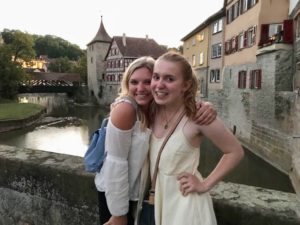
After our tour, we went to the town farmer’s market in the main square, Marktplatz. And you will never guess what we found! (see photo)
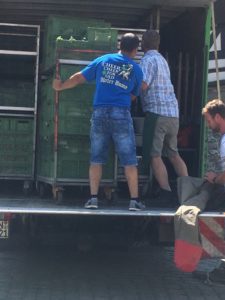
This was extra special for both of us because the last time we saw each other was in South Bend ten years ago!
KLOSTER COMBURG
We also walked to the local Kloster Großcomburg or “Big Kloster Comburg”, which is about 2.5 km from Schwäbisch Hall. Großcomburg was founded in 1078 as a Benedictine monastery. Between 1802 and 1947 it served as the headquarters for the Royal Württemberg Honorary Corps of Invalids. Since 1947, Großcomburg has remained a place of academic training for teachers working at schools in Baden-Württemburg.
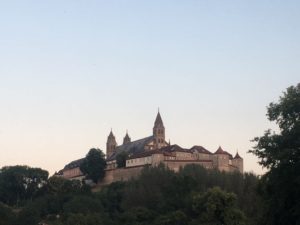
As we walked the large wall that surrounds Kloster Großcomburg, we were able to see the smaller Kloster or “Kleincomburg” on the other side of the valley. Kleincomburg is approximately 20 years younger than Großcomburg and has been used as a convent, hospital, and a center for persons against the Protestant Reformation. In 1877, Kleincombug was bought by Baden-Württemburg and has since been used as an administrative branch for the Prison of Schwäbisch Hall.
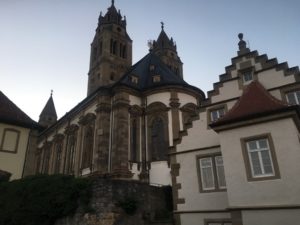
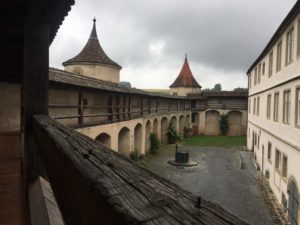
HOHENLOHER FREILAND MUSEUM
We also ventured into the German countryside to explore the Hohenloher Freiland Museum that showcases rural life in Germany! The small village of Wackershofen was transformed into a museum because of its rich history and culture.
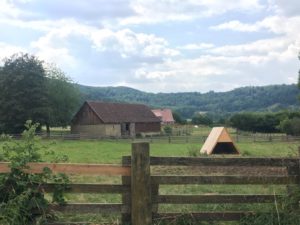
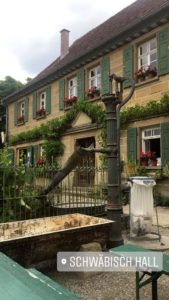
The structure of the rural homes in Wackershofen were fascinating to us. The horses, pigs, and other animals were kept in stables on the ground floor and the living quarters for family was above. How convenient!
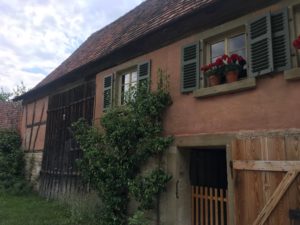
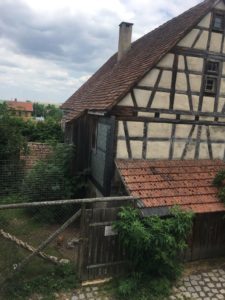
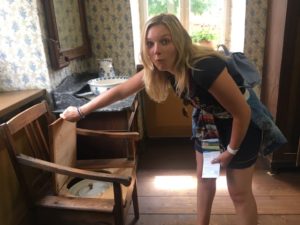
The museum extended to a house at the top a large hill called Käshof. During the mid 1900s, Käshof was owned by Wilhelmine and Gottlieb Kaiser of whom in the fall of 1944 had courageously welcomed into their home three persons who had been wandering throughout Germany seeking safety. These three persons were Jewish father Max Rosenfelder and his daughter Ilse, as well as Nazi Wermacht deserter Willi Bruchhausen. Max, Ilse, and Willi spent most of their time in the house in hiding. However, Max and Willi were forced to flee to woods nearby when Nazi Wehrmacht soldiers invaded Wackershofen. Ilse remained in hiding the house until a sister of the Red Cross reported her and she had to flee to Augsburg. But thanks to the unbelievable courage of the Kaiser family, all three survived the war. This museum opened my eyes to the harrowing reality of the Holocaust. But people like the Kaisers serve as a continual reminder that even in the darkest of times, hope remains and can overcome.
